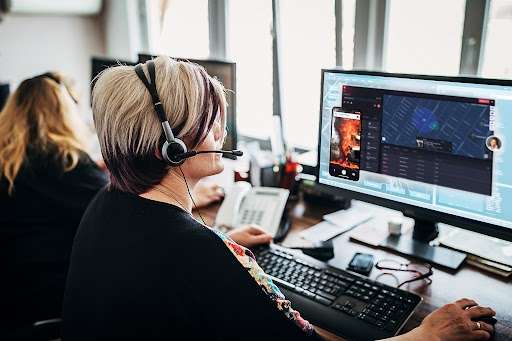
911 call takers and dispatchers play a crucial role in emergency response, providing critical assistance and coordinating emergency services in times of crisis. They are the first point of contact for many people in distress, and their ability to quickly assess and respond to emergencies can often mean the difference between life and death.
Traditionally, 911 call takers and dispatchers have relied on verbal communication from callers to assess the situation and determine the correct course of action. However, in recent years, there has been growing recognition of the potential benefits of live video feeds from citizens who are calling 911 for emergency services.
Live video streams in 911, also known as incident imagery, can provide call takers and dispatchers with valuable visual information about the emergency, enabling them to better assess the situation and make more informed decisions about how to respond. For example, a live video feed could provide information about the location and severity of a fire, the extent of damage caused by a natural disaster, or the number and nature of injuries in an accident. In addition to providing valuable information to call takers and dispatchers, live incident imagery can also help to improve the safety of both citizens and first responders. In situations where it is too dangerous for first responders to enter a building or area, live video feeds can allow them to assess the situation and plan their response without putting themselves at risk.
Incident imagery can also help to improve the speed and efficiency of emergency response. By providing call takers and dispatchers with more accurate and detailed information about the emergency, they can more quickly and effectively dispatch the appropriate emergency services.
Finally, live video feeds can also help to improve the overall quality of emergency response by reducing the potential for misunderstandings and miscommunications between callers and call takers. For example, a caller could be reporting a vehicle on fire, but leave out that the vehicle is also in a covered garage, leading to a structure fire. By providing call takers and dispatchers with a clear visual understanding of the situation, they can more accurately communicate with responders and ensure that the appropriate resources are deployed.
However, there is a lot of misinformation amongst the dispatch community about incident imagery. This misinformation created trepidation toward adopting this critical data source into their workflow. We wanted to address some of the facts vs myths around live video:
Fact or Myth – Live video streams mean the caller would see the dispatcher too.
Myth – Many call takers and dispatchers have resisted the use of video because they feel that the trauma of hearing these cases is enough, and they don’t want to be forced to watch it as well. Many call-takers also have misconceptions about how live video works. For example, the video is unidirectional. The citizen won’t see anything, only the call-taker and dispatcher will have the option to see it. In Carbyne’s products, the video comes into the feed blurred. The call taker or dispatcher can click on it to view the content, but they are not required to view every call in video. So you can use it when you need it, but blur it when you don’t.
For example, In the Carbyne Universe window, the call taker or dispatcher has to click on the video feed to view the content. However, they are not required to view every video session so it can be used when needed but hidden when not. Additionally, each video session is recorded in the background, even when not being viewed by the caller so its evidentiary value is still preserved.
Fact or Myth – Incident imagery in 911 is aimed at replacing the humans under the headset
Myth – Incident imagery is NG911 technology that is meant to supplement, not replace, human operators. The data that is provided through multimedia is only viable when observed and analyzed by a subject matter expert; specifically the 911 call taker and dispatcher.
Fact or Myth – Responders must be on scene before command decisions can be made.
Myth – Because of tools that bring incident imagery into the 911 center, and even more enhanced technology that can connect the responder to the incident, many scene safety and tactical decisions can be made by incident commanders prior to anyone arriving on the scene.
Fact or Myth – Call takers and dispatchers are expected to use multimedia on every call type.
Myth – Incident imagery in 911 is not always the best tool to use on every call. Sometimes, it’s
actually an unnecessary tool. It is important to understand the types of calls in which video or other multimedia would bring value and aid in citizen and officer safety.
In conclusion, live video feeds have the potential to revolutionize emergency response by providing call takers and dispatchers with valuable visual information that can improve the speed, efficiency, and quality of emergency services. As technology continues to advance, it is likely that we will see even more sophisticated tools and technologies developed to support emergency response, and live video feeds will undoubtedly play a central role in this ongoing evolution.